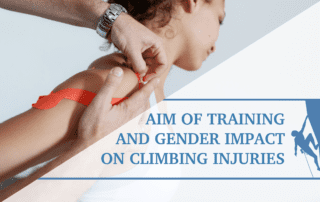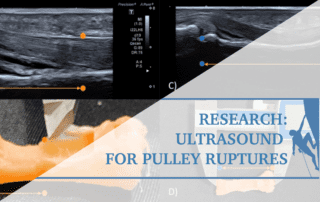The Psychology of Rock Climbing: A Systematic Review
The systematic review on the psychology of rock climbing provides a comprehensive analysis of psychological aspects in climbing, focusing on the unique demands of this high-risk sport. Researchers investigated various sub-disciplines, such as risk perception, motivation, personality, and mental states like flow. Through analyzing over 80 studies, the review highlighted how climbers balance performance [...]
Painfully Ignorant? Impact of Gender and Aim of Training on Injuries in Climbing
This systematic review explores the significant influence of gender and training goals on climbing injuries, highlighting the differences in injury types and prevalence among men and women climbers. The research analyzed data from over 1,500 climbers who participate in sport climbing, bouldering, and traditional climbing. Key findings reveal that more than 50% of climbers [...]
Reliability and Validity of Ultrasound in Identifying Anatomical Landmarks for Diagnosing A2 Pulley Ruptures: A Cadaveric Study
The article, by Xeber Iruretagoiena et al called "Reliability and Validity of Ultrasound in Identifying Anatomical Landmarks for Diagnosing A2 Pulley Ruptures: A Cadaveric Study", focuses on the use of high-resolution ultrasound (US) to diagnose finger pulley injuries, particularly the A2 pulley, common in rock climbers. This cadaveric study aims to assess the reliability [...]
Growth Plate Injuries In Youth Climbers
The popularity of rock climbing among young individuals has surged in recent years, leading to an increased incidence of finger stress epiphyseal fractures, which are the primary injury observed among youth climbers. These fractures commonly occur during puberty, a period when the growth plates (physis) in the fingers are particularly susceptible to damage. Initially, [...]
The Future of Parkinson’s is Climbing
Tell a non-climbing friend that you’ve got a sore finger and they might not be too sympathetic. For us as climbers, on the other hand, such an injury can feel disastrous. And that makes absolute sense.
Energy System Training with Limited Resources
Tell a non-climbing friend that you’ve got a sore finger and they might not be too sympathetic. For us as climbers, on the other hand, such an injury can feel disastrous. And that makes absolute sense.






